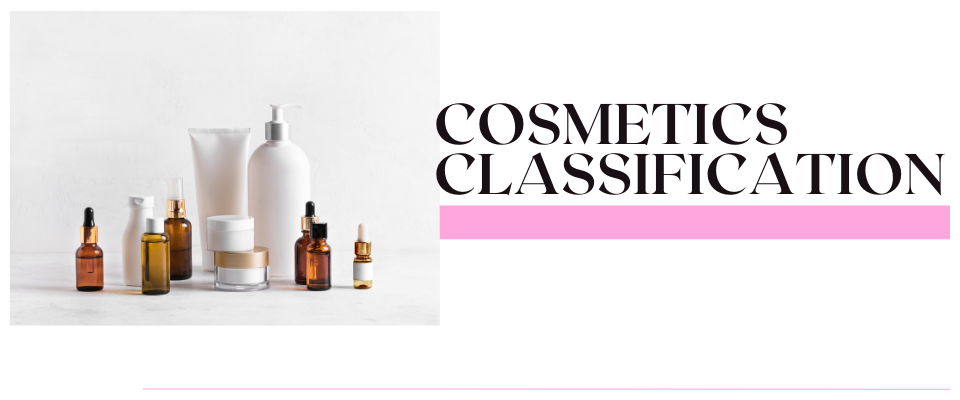- If you have any questions, please contact us!
- +84 965 624 065
- info@greennrj.com.vn
How to Import Perfume into Vietnam in 2025: Procedures, Requirements Proven Guide

How to Import Facial Cleansers into Vietnam (2025): Success Step-by-Step Guide for Cosmetic Brands
May 16, 2025
How to Import Shampoo into Vietnam (2025): Proven Guide
May 19, 2025Import perfume into Vietnam in 2025 presents a lucrative opportunity for global fragrance brands, cosmetic companies, and international distributors. With growing consumer demand for high-end personal care products—especially in major urban markets like Ho Chi Minh City and Hanoi—Vietnam is rapidly emerging as a strategic destination for both luxury and mass-market perfume imports.
However, importing perfumes into Vietnam requires strict compliance with local regulations, including cosmetic product notification with the Ministry of Health (MOH), HS code classification, labeling in Vietnamese, and customs clearance procedures regulated by the General Department of Vietnam Customs.
In this comprehensive guide, we walk you through the step-by-step process of legally importing perfumes into Vietnam in 2025—covering key legal requirements, registration procedures, taxes, import duties, and best practices for compliance.
1. Cosmetic Product Notification (CPN) for Perfume in Vietnam
To legally import and distribute perfumes in Vietnam, international brands and distributors must first complete the Cosmetic Product Notification (CPN) process. This is a mandatory registration requirement under Vietnam’s cosmetic law. Without a valid CPN number, your perfume products cannot clear customs and cannot be sold in the Vietnamese market.
This procedure ensures that all cosmetic products—including perfumes and fragrances—meet Vietnam’s health, safety, and labeling standards before being allowed into circulation.
Legal Basis for Cosmetic Notification in Vietnam
The Cosmetic Product Notification system in Vietnam is based on a unified legal foundation aligned with ASEAN standards. The key regulatory documents include:
- Decree 93/2016/ND-CP: This decree establishes the comprehensive legal framework for managing cosmetic products in Vietnam, including import processes and the mandatory cosmetic notification Vietnam requirements.
-
Circular No. 29/2020/TT-BYT: Details procedures for cosmetic product notification
-
Circular No. 32/2019/TT-BYT: Provides updates on cosmetic product registration and notification
Important Notice: Without an approved CPN, your perfume shipment will be detained at customs and may be subject to confiscation, return, or destruction. Vietnamese authorities require CPN approval before customs clearance and commercial sale.
Who Can Apply for CPN?
According to current Vietnamese regulations, only a legal entity established in Vietnam can act as the Cosmetic Notification Holder (CNH) and submit the CPN application.
The CNH can be one of the following:
-
A Vietnamese trading or cosmetic distribution company with a valid enterprise registration certificate
-
A foreign-invested enterprise (FIE) licensed to import and distribute cosmetics in Vietnam
Foreign manufacturers or exporters cannot directly apply for the CPN without appointing a Vietnamese CNH.
Tip: Many global perfume brands choose to work with a local Vietnamese consulting firm or authorized importer who can act as their CNH and handle all CPN formalities on their behalf.
Legal Responsibilities of the Cosmetic Notification Holder (CNH)
The CNH is legally responsible for the perfume products being circulated in Vietnam. Their obligations include:
-
Ensuring that the product formulation and packaging comply with ASEAN Cosmetic Directive and Vietnam MOH regulations
-
Keeping all CPN information updated and accessible in case of inspection
-
Making sure product claims (e.g. “long-lasting fragrance”) match the product classification as a cosmetic
-
Ensuring that labeling, ingredients, and safety meet Vietnamese standards
-
Cooperating with Vietnam’s Drug Administration and Health Department in case of product recall, safety alerts, or regulatory inspections
Documents Required for CPN:
Here is the list of documents you must prepare to successfully register a perfume product under the CPN system in Vietnam:
| Document | Description |
|---|---|
| Online Notification Form | Must follow the official template provided under the ASEAN Cosmetic Directive and submitted through Vietnam’s MOH portal |
| Power of Attorney (POA) | Issued by the manufacturer or brand owner, signed and notarized in the country of origin, then consular legalized for use in Vietnam |
| Certificate of Free Sale (CFS) | Issued by competent authority in the country of origin, proving the perfume is legally sold there; must also be legalized |
| Ingredient List | Full list of ingredients with INCI names, concentrations (% w/w) |
| Product Description & Use | Must clearly describe the product as a perfume or eau de parfum, including application area (e.g., body, hair) |
| Business License | Enterprise registration certificate of Vietnamese CNH |
All documents must be in Vietnamese or English and must be accurate and consistent across all files.
CPN Validity Period & Reusability
-
A Cosmetic Product Notification (CPN) is valid for 5 years from the date of approval.
-
The same CPN can be used for unlimited import shipments of the exact same perfume product, provided there are no changes to:
-
Product name
-
Composition
-
Packaging
-
Intended use
-
If any changes occur, a new CPN application must be submitted.
2. HS Code and Import Duties for Perfume
Properly classifying your perfume products under the correct HS (Harmonized System) Code is a critical step when importing perfumes into Vietnam. It ensures accurate calculation of import duties, value-added tax (VAT), and determines whether your shipment qualifies for preferential tariff rates under Vietnam’s Free Trade Agreements (FTAs).
Mistakes in HS code classification can lead to customs clearance delays, penalties, or loss of tariff preferences—so it’s essential for foreign exporters and local importers to get it right.
Suggested HS Code for Perfume:
| HS Code | Description | VAT | MFN Import Duty | General Duty |
|---|---|---|---|---|
| 33030000 | Perfume and fragrance | 10% | 18% | 27% |
Preferential Tariff Rates under Vietnam’s FTAs
Vietnam is a member of several bilateral and multilateral FTAs, offering reduced import duties for qualifying goods. The actual rate applied depends on the product’s origin and submission of a valid Certificate of Origin (C/O).
| Country/Region | Preferential Duty | FTA |
|---|---|---|
| EU | 4.5% | EVFTA |
| ASEAN | 0–10.8% | ATIGA / RCEP |
| South Korea | 5–10.8% | AKFTA / VKFTA / RCEP |
| Japan | 0–11.5% | AJCEP / VJEPA / CPTPP/ RCEP |
| USA | 18% | No FTA with Vietnam (general rate applies) |
| China | 0–10.8% | ACFTA / RCEP |
Example: A French perfume brand importing into Vietnam under the EU–Vietnam Free Trade Agreement (EVFTA) may enjoy a significantly reduced duty rate if a valid EUR.1 Certificate of Origin is submitted at customs.
Why Certificate of Origin (C/O) Matters
To benefit from preferential FTA duty rates, importers must present a Certificate of Origin (Form C/O) that meets the following conditions:
-
Issued by a competent authority in the exporting country
-
Matches the declared HS code (33030000) and product description
-
Clearly indicates the country of origin
-
Must be submitted at the time of customs clearance or within the allowed submission window
Without a valid Certificate of Origin (C/O), Vietnam Customs will apply the MFN rate of 18%, even if the exporting country has a Free Trade Agreement (FTA) with Vietnam.
Pro Tips for Accurate Classification & Duty Reduction
-
Pre-determine HS Code with a Vietnamese customs consultant or freight forwarder to avoid misclassification.
-
Ensure the product description on your invoice and C/O matches the declared HS code.
-
Always verify that your C/O format is recognized under the relevant FTA (e.g., Form D, Form AK, EUR.1).
-
If uncertain, request a Binding HS Code Ruling from Vietnam Customs for legal certainty.
3. Customs Clearance Procedures for Perfume
After completing the Cosmetic Product Notification (CPN) process, your perfume products are legally eligible for import into Vietnam. However, to clear customs smoothly, importers must follow the correct Vietnamese customs clearance procedures, prepare all required documents, and ensure compliance with product-specific import requirements—especially for cosmetic and fragrance goods.
Perfumes, due to their alcohol content and high value, are often subject to strict scrutiny during customs clearance.
Required Documents for Import:
To clear imported perfumes through Vietnamese customs, the importer must prepare and submit the following documents:
| Document | Purpose |
| Import Declaration Form | Submitted electronically via VNACCS/VCIS – Vietnam’s e-customs system |
| Commercial Invoice | Must include detailed description of the perfume (brand, concentration, volume, HS code) and transaction value |
| Packing List | Itemizes each SKU in the shipment; must match the invoice |
| Bill of Lading / Airway Bill | Confirms transportation details (sea or air freight) |
| Valid CPN Certificate | Confirms the product is registered with Vietnam’s Ministry of Health |
| Certificate of Origin (C/O) | Required to apply preferential import duties under FTAs |
| Customs Brokerage Authorization (if applicable) | If working through a licensed customs agent in Vietnam |
All documents must be consistent across descriptions, HS codes, and quantities. Any mismatch can cause customs delays or rejections.
Typical Timeline for Perfume Customs Clearance
| Step | Estimated Timeframe |
| Electronic declaration submission | Same day |
| Document review & customs decision | 1–2 working days |
| Physical inspection (if selected) | + 1 working day |
| Final clearance & release | Within 3 working days (total) |
Note: If your shipment is selected for inspection (red/yellow channel), the timeline may extend depending on volume, customs officer workload, and inspection results.
Common Issues That Delay Perfume Imports at Customs
Perfumes are classified as high-risk consumer goods, so Vietnam Customs pays special attention to the following areas:
-
Incorrect HS Code Classification
Using the wrong HS code can result in overpayment of duties, rejection of C/O, or administrative fines. Perfume products should generally be classified under HS Code 33030000. -
Missing or Invalid Certificate of Origin (C/O)
If the C/O is missing, expired, or has inconsistent information (e.g., wrong product name or origin country), the shipment will be charged at the general duty rate (27%), not the preferential FTA rate. -
Product Description Mismatch
Customs checks whether the description on invoices and labels match the declared goods. Discrepancies may lead to further inspection or rejection. -
Undeclared or Excessive Alcohol Content
Perfumes typically contain alcohol. Customs may test products with high alcohol concentrations. Products above the threshold could be subject to additional controls or even reclassification as flammable liquids or chemicals.
Pro Tips to Ensure Smooth Customs Clearance
-
Always pre-check your HS code classification with a licensed Vietnamese customs consultant
-
Prepare and review all customs documents thoroughly before shipment
-
If using preferential duties under FTAs, make sure the Certificate of Origin (C/O) is correctly issued and submitted on time
-
Label products according to Vietnamese cosmetic labeling regulations (in Vietnamese, with key info such as name, function, country of origin, etc.)
-
Consider working with a customs brokerage firm experienced in cosmetic and fragrance imports in Vietnam
4. Labeling Requirements for Imported Perfume
All imported perfume products must comply with Vietnamese labeling regulations before being circulated or sold on the market. This includes products sold in retail stores, e-commerce platforms, or duty-free channels.
Labeling compliance is governed by two key legal documents:
-
Decree No. 43/2017/NĐ-CP: Governs labeling for all goods circulated in Vietnam
-
Decree No. 111/2021/NĐ-CP: Amends and supplements regulations specific to imported products, including cosmetics
Failure to meet these requirements can result in fines, confiscation, or a ban from circulation.
Mandatory Label Contents (in Vietnamese):
Under Vietnamese law, the outer packaging or container of every imported perfume product must include the following information in the Vietnamese language:
| Label Element | Description |
|---|---|
| Product Name | Full commercial name of the perfume |
| Brand Name | Trademark or brand under which the perfume is marketed |
| Intended Use | Usually “fragrance for external use” |
| Usage Instructions & Precautions | Include how to apply and any safety warnings (e.g., avoid contact with eyes) |
| Ingredients | Full ingredient list in descending order of concentration, as per ASEAN Cosmetic Directive |
| Net Weight or Volume | Indicated in grams or milliliters (e.g., 50ml, 100ml) |
| Manufacturing (MFG) & Expiry (EXP) Dates | Format: dd/mm/yyyy or mm/yyyy |
| Batch Number | Production batch number for quality control and traceability |
| Country of Origin | The country where the product was manufactured. E.g., “Made in France” |
| Manufacturer and Vietnamese Distributor / CNH | Name and address of foreign manufacturer and Vietnamese importer/distributor (Cosmetic Notification Holder – CNH) |
Note: Labels must be clear, visible, and non-erasable. Sticker labels are allowed, but must be securely affixed.
Foreign-Language Labels vs. Vietnamese Sub-Labels
Imported perfumes often arrive with original labels in English, French, or Korean. These are allowed to remain but must be accompanied by a Vietnamese-language sub-label that contains all the required information listed above.
The Vietnamese label can be:
-
Printed directly on the product packaging (if customized for Vietnam)
-
Or attached as a supplementary label before customs clearance or distribution
Important: Products without proper Vietnamese labeling cannot be sold on the market and may be seized or fined during post-clearance audits.
Label Placement & Inspection Tips
-
The Vietnamese sub-label must be placed on the primary retail packaging (bottle box or container), not just on the shipping carton
-
Labels should not cover or obscure important original information (e.g., batch code or expiration date)
-
Vietnam customs and Market Surveillance Authorities may inspect labeling at entry ports and retail points
Compliance Tips for Importers and Brands
-
Use a standard Vietnamese label template reviewed by a cosmetic compliance expert
-
Ensure all translations are accurate, especially ingredient names and safety warnings
-
Keep digital copies of all label designs for post-clearance audits or MOH inspections
-
Align label info with your CPN certificate to ensure consistency across regulatory filings and packaging
5. F&A about Import and distribute perfumes in Vietnam
1. Do I need a Cosmetic Product Notification (CPN) to import perfume into Vietnam?
Yes. All perfume products must have a valid Cosmetic Product Notification (CPN) approved by the Ministry of Health before customs clearance and sale in Vietnam. This ensures your products meet local safety and labeling standards.
2. What is the HS code used to import perfume into Vietnam?
Perfume products are generally classified under HS Code 33030000. This classification determines the import duty rate and applicable taxes when you import perfume into Vietnam.
3. Are there any tax incentives when I import perfume into Vietnam?
Yes. Import duty rates can be reduced or even eliminated under Free Trade Agreements (FTAs) like the EVFTA, RCEP, or ASEAN agreements. You must provide a valid Certificate of Origin to claim preferential rates.
4. How long does customs clearance take when I import perfume into Vietnam?
On average, it takes 1–3 working days if all documents, including the CPN, HS code, and Certificate of Origin, are accurate and complete.
5. What are the labeling requirements to import perfume into Vietnam?
All perfumes must include a Vietnamese sub-label showing product name, ingredients, usage instructions, manufacturing date, expiration date, batch number, country of origin, and details of the local Cosmetic Notification Holder.
6. Conclusion
Importing perfumes into Vietnam in 2025 involves various legal and procedural steps—from Cosmetic Product Notification (CPN) to HS classification, customs documentation, and Vietnamese labeling compliance.
Foreign brands can benefit greatly from Vietnam’s growing beauty and personal care market by ensuring regulatory readiness and collaborating with a trusted local partner (CNH).
✅ Need help importing perfumes into Vietnam?
Green NRJ offers full-service support including:
- CPN registration
- Certificate of Origin (C/O) consultation
- HS code verification
- Customs clearance
- Labeling compliance
📩 Contact us today to streamline your perfume importation into Vietnam.
📚 Related Articles:
- How to Import and Sell Cosmetics in Vietnam
- Guide to Cosmetic Product Notification (CPN) in Vietnam
- Labeling Compliance for Imported Skincare Products in Vietnam


